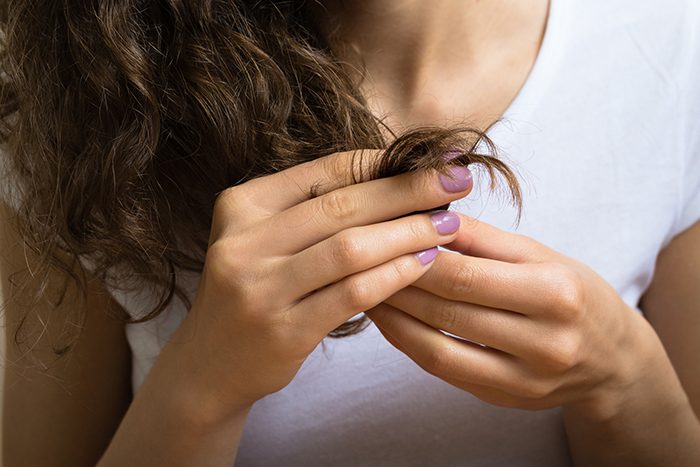
Photo by Sam74100/Getty Images
The word ‘heat’ for curly girls can dredge up memories of standing in your bathroom mirror as the ‘hsss-ing’ sound came from your trusty flat iron. As a small cloud of smoke escaped from in between the hot plates of your flat iron, your curls and coils were transformed into straight hair, with no shrinkage to be found.
It’s those memories of the hours spent straightening hair that leave many curly girls shuddering — not because of how long it took, but because of how much damage they caused their hair. After all, heat damage can cause breakage, frizz, and even a looser of curl pattern. But sometimes, you get that urge — yes, that little urge — to see what your hair looks like straight after all those months, and in some cases, after all those years.
Avoiding heat styling may seem like the best way to prevent thermal damage during your healthy hair journey; however, there are ways to incorporate heat styling and still have your healthy curls.
What is heat damage?
Let’s start with the process of heat styling. Cosmetic chemist Tonya McKay> says, “Application of heat to the hair breaks hydrogen bonds, and the use of tension or pressure allows hair to be re-shaped so that the new hydrogen bonds form to support the new shape (straight or curled”>.”
Hair damaged by heat can often appear and feel dry and frizzy, with the possibility of split ends and even breakage. You can also spot heat damage on your curls if they have these qualities or they don’t appear to curl and “bounce” like your other curls.
Prepare your hair
When heat styling, start by cleansing your curls. Clean hair is the best kind of hair to work with when implementing heat outside your normal routine — so always shampoo and condition your hair before heat styling. Product buildup can cause your hair to be weighed down — plus, those burnt smells you have flashbacks about can occur if there is still a lot of product on your hair.
After shampooing, give yourself a nice deep condition before you start with the heat. My go-to leave in conditioner is the Palmer’s Deep Conditioning Protein Pack, which helps prepare my hair for the heat by keeping my hair moisturized.
Preventing heat damage
After you rinse out your conditioner, thoroughly detangle your hair and apply a heat protectant of your choice. When searching for a heat protectant serum, it is important to look for key ingredients. Silicones can be found in heat protectants. Not only will they protect your hair during heat use, but they will also assist with moisture retention — after all, we want to make sure our curls bounce back with moisture when we wash them again.
Which product you use can depend on whether you’re blow drying or using a flat iron.
When I had relaxed hair and used a flat iron, I used the TRESemme Thermal Creations Heat Protector Spray — and for as many times as I straightened my hair both before and during my natural hair transition, this product saved my hair from a lot of heat damage! Another product I’ve had good luck with is Motions Heat Styled Straight Finish Sealer.
If you’re blowing out your hair, I suggest using Shea Moisture’s Red Palm Oil & Cocoa Butter Curl Stretch Pudding, particularly if you’re planning to do a braid out or twist out on your blow-dried hair. Not only does it make your styles more defined, but also helps to stretch your style, especially if you have oily, shrinkage prone hair.

Photo by iprogressman/iStock
After applying your heat protectant, divide your hair into manageable sections so you can methodically address each section of hair without applying too much heat to any particular area.
It’s best to use heat tools with temperature adjustments, so you can select what level is suitable for your hair. The flat iron should not be used any higher than 400 degrees if you would like to avoid heat damage.
If you are drying your hair with a blow dryer, use a comb attachment or a paddle brush. This will allow your hair to not only be straighter, but also helps with making sure the hair is detangled.
Life after heat tools
When you next shampoo your hair after a straightening, notice how your curls respond. Do they revert back to normal? Are they frizzy or looser? If your curls do not revert back to how they were before, use a strengthening conditioner or protein treatment to whip them back into shape. It may take a few wash days for your curls to revert completely, and if they don’t, it’s a sign you have heat damage. From there you have two options: cut the heat damage from your hair or grow the heat damage out like you’re transitioning. Now you can look back at your experience to see what you could have done differently and learn from it — it’s all a part of the journey!
Searching for products to try on your next blow out? Try our top products for your best blowout! Follow us on Instagram for inspiration.
